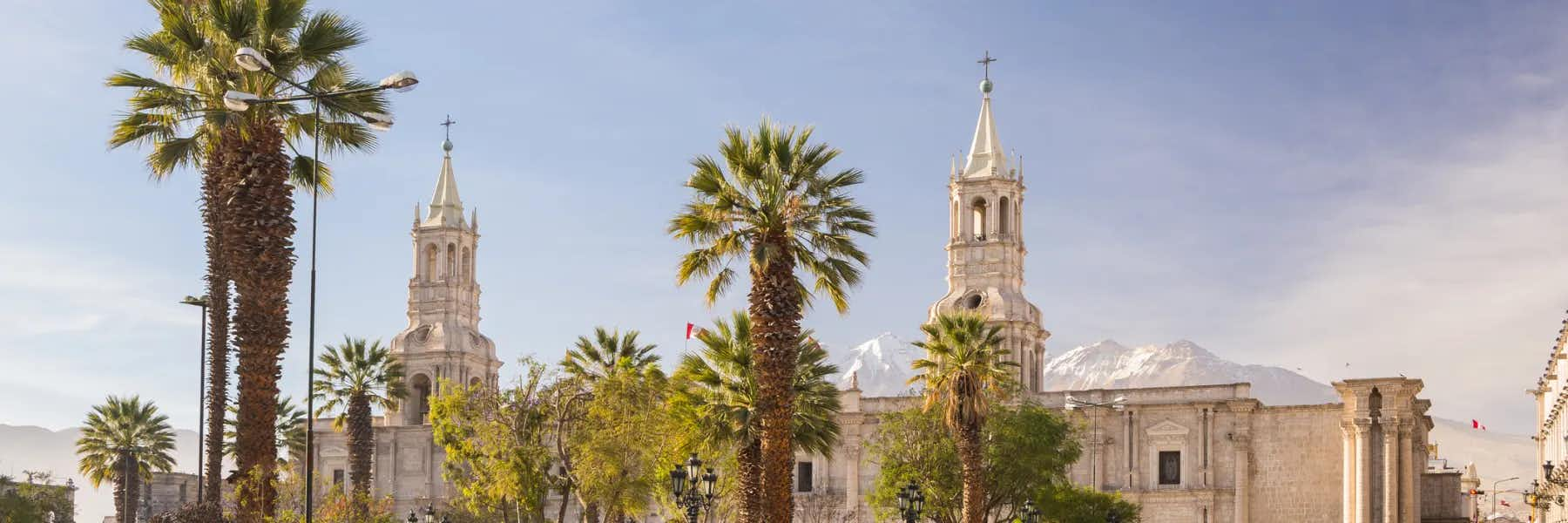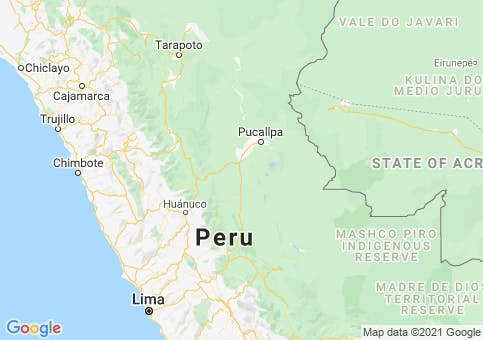Although Peru is definitely under-the-radar when it comes to Latin American retirement destinations, there are many reasons to move to this country: the cost of living is low, the local people are friendly and welcoming of new neighbors, and there’s good value real estate available. Because Peru’s expat community is small, you also have the opportunity to have a real cultural experience and discover the rich indigenous traditions that make Peru unique.
If you decide to look further into Peru as a retirement destination, keep in mind that you have a variety of climates and landscapes available. There is the warm weather coast, the cool and crisp Andes regions, and the high sierra where it’s dry and sunny most of the year.
For example, in the capital, Lima, it is warm most of the year. Head north along the coast to Trujillo and you have a mild climate—warm during the day, cool at night. But go to the interior to the city of Arequipa, set at 7,638 feet and you’ll enjoy 300 days of sunshine a year, with temperatures in the 70s F. While in the Andean town of Cusco—at 11,000 feet—and the nearby Sacred Valley of the Incas, the weather is cooler on average and you definitely need a warm sweater at night.
Located at the northern end of South America, Peru is not a quick flight from North America. It’s about five hours from Miami. But it is relatively easy to get to, with many airlines featuring direct flights from U.S. cities. You also have the advantage of being in the Central Time Zone, which makes keeping in touch with friends and relatives back home easy.
The long-time practice of living in Peru on a three-month tourist visa, renewed by leaving the country and re-entering, is no longer a viable option, as the government is now encouraging expats to obtain official residence and restricting tourist visas to six months out of the year. Fortunately, Peru does have a variety of residence options available. Most retirees choose rentista, which requires $1,000 a month in income from Social Security, a pension, or investments. A dependent spouse can be added with another $500 a month in income. This visa allows you to live full-time in Peru, and you can use the government-run national healthcare service, which has clinics and hospitals throughout the country.
Peru is a land of ancient peoples and centuries-old traditions. The influence of the indigenous Incas and other peoples, as well as the history of the Spanish colonizers, is keenly felt here in everyday life and cultural celebrations. But this is still a modern country. High-speed internet is available just about everywhere, cell phone service is widespread, and cable and satellite TV is also widely available, often with shows in English.
This is definitely a Spanish-speaking country. But the influence of tourism means that in many spots, especially tourist havens like Cusco, you will not have any trouble communicating, as many people speak at least some English. In any case, learn a bit of Spanish and be willing to try and you’ll find you can accomplish most things with a bit of effort.
A big advantage to moving to Peru is that the cost of living is so low. In the popular city of Arequipa, you can rent a three-bedroom luxury apartment for under $500 a month. Food is affordable. Simple local-style restaurants will run you $2 a meal. And even “international” restaurants are under $8 a plate. You save on shopping in markets too—try $1 for two pounds of grapes or $2 for two pounds of pears...a whole chicken will cost you $5.
Ideal climate, a welcoming local population, and low costs…Peru has a lot to recommend it.
The First 5 Things All Expats Should do When They Move to Peru
Changing countries always involves a series of new adventures and every new location has its own quirks…Peru is no different. Whether you are moving for several months, or a lifetime, the following tips should help you avoid any problems in your first few weeks in this fascinating country.
1. Obtain a Permiso Especial para Firmar Contratos
In Peru, you need special permission to sign any legal document if you are there as a tourist or student. If your plan is to work, buy property, rent an apartment, or do anything else that requires a contract, you will need to obtain Permiso Especial para Firmar Contratos. This “Permission to Sign Contracts” visa is necessary to ensure that any document you sign is legal. Once you obtain any long-term visa, it is no longer necessary.
It is a simple, inexpensive process that can be taken care of at any Peru immigration office. You will need a completed Form F004 and a valid passport. The 16 soles ($5) fee can be paid at any Banco de la Nacion. Just be sure to keep the payment receipt.
2. Brush up on Your Spanish
Is it necessary to speak fluent Spanish to live in Peru? Probably not…but your life will be much easier and more enjoyable if you at least know some of the language. There are lots of websites that offer free introductory courses and many available apps to start you on your path to fluency. Memrise is easy to use and builds your vocabulary quickly and efficiently. Duolingo is a fun little interactive app that will introduce you to the basics.
Peruvian Spanish is a little different from what you may learn online, but it is usually spoken clearly. A few hundred words under your belt will go a long way to helping you on a day-to-day basis. Once you arrive, be sure to practice, practice, practice.
3. Buy a SIM Card
If you have an unlocked cellphone, buy a prepaid SIM card once you arrive in Peru. If you don’t have an unlocked GSM phone, you will probably want to buy one., as you will want to be in touch with real estate agents, landlords, service providers and also have local information at your fingertips when you need it.
Claro and Movistar are the main providers in Peru. Both offer a variety of mobile phone plans, but buying a prepaid SIM card is the easiest option. A prepaid SIM card allows you to dial and receive local calls, and add additional credit when needed. You’ll find Claro and Movistar stores and outlets throughout the country.
SIM cards cost around 15 soles ($4.50) and buying 30 or 40 soles ($9 to $12) of credit is plenty to get started. You can purchase more credit at any corner store or grocery store displaying the Claro or Movistar logo. They will just need your phone number and the amount you want to purchase.
Data charges vary depending on the company. It is possible to purchase one-off data packages as well. Until you have home internet installed, it is great to have your phone as a backup to search for information, addresses, shops, and maps of the area.
4. Start the Long-Term Visa Process ASAP
Entering Peru is easy; staying there takes more planning. When you first enter the country, you can stay up to a maximum of 183 days. Be sure that this is the amount of time that is given to you. Although it is possible to obtain some visas within a month or two, the process may be delayed for unforeseen reasons.
The Carnet de Extranjeria is your ticket to living in Peru. It is the Peruvian identification card for foreign residents. There are several ways to be eligible for a resident visa and receive a C.E. They include options such as retirement, education, investment, marriage, and business. Whatever visa you decide to go with, be sure to do your homework. Some supporting documents require three or four steps of authentication before you even leave home.
You can find out the basic information for all the possible visas at the Peru Immigration website. Although it is less expensive to go through the process yourself, you will need to be able to converse in Spanish or at least have a Spanish-speaking friend to help you along the way. It is more expensive but much less frustrating to hire a lawyer to help you out. For $750 or less, there are various law firms and agencies that will hold your hand through the whole process. The nice thing is that it is a one-time process. Once you have your visa, it is good for life.
5. Get Your Healthcare in Order
Other than routine vaccinations, the CDC also recommends Hepatitis A and typhoid vaccines, especially if you are visiting smaller cities or rural areas, or if you are an adventure seeker.
Peru has a good network of public and private hospitals and clinicas. However, public institutions can have long waiting times and may not be able to help with specific problems. Be sure to ask around and determine how and where to receive good emergency service wherever you decide to relocate.
If you are no longer insured by your home country, it is recommended that you get private health insurance so that you can receive immediate medical assistance if needed. Pacifico, La Positiva, and Rimac are three popular companies that offer a variety of comprehensive packages. You can find a complete list here.











